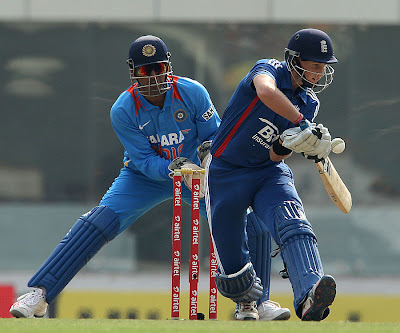I don't like basketball particularly. I can admire the skill of the the control of the ball and the athleticism of the players but as a game - and more importantly as a contest - watching basketball leaves me cold. The reason is that it is generally a one-sided contest as the team with the ball is expected to score. The defending team of course does its best but the attacking team, on the majority of occasions it has the ball, gets the ball through the hoop. It is not a fair contest between the team with the ball and team without it and scoring is not exciting in itself, it is more the shock of not scoring that brings the oohs and aahs from the spectators.
I was reminded of basketball when I watched Chris Gayle score his 175 not out for the Royal Challengers in the IPL this week. I am sure you are familiar with the stats that flowed as fast as the runs off his bat - 100 runs off 30 balls, 17 sixes, 13 fours, fastest this, biggest that - Gayle now holds every record that the IPL marketing men can dream up - including the smallest breakfast before a match - watch out for the launch of Gayle pancakes soon. In the context of the game, the bowling of Luke Wright and Kumar combined eight overs for 49 runs is almost a bigger achievement when you consider that the other twelve overs went for 211 runs.
I happily concede that Gayle's performance was an amazing feat, a display of almost chance-less power hitting that seemed to be both effortless and brutal at the same time. Gayle is a big strong guy but clearly he timed the ball beautifully as well, and in the main, his blows were proper cricket shots with many straight hits and perfectly executed cuts and pulls. Not for Gayle the trick shots of reverse scoops and moving around the crease (for a display of these skills AB de Villiers 31 runs off 8 balls was a mini-marvel in its own right), he did in his own inimitable style with minimal movement and maximum grace - as befits the acknowledged coolest cricketer on the planet.
 |
| Gayle rewrote the record books and redefined the power play |
For me cricket must always be a good contest of skill between the bowler and batsman - sure, sometimes playing conditions will favour one rather than the other, but a wicket is still to be celebrated and a shot for six or four savoured. I fear for the game in general as I have to reluctantly accept that T20 is changing so many aspects of the game. No so long ago six runs an over was considered a very fast scoring rate, now sixteen runs an over is more often getable than not in the final throes of a game. Whether this is because of the improved skills of the batsmen, shorter boundaries, or bigger bats, is not the issue for me. I just don't want cricket to be like basketball and just be a contest between each team's attacking batsmen and where the bowlers are bit-part defenders with the occasional success and dot ball. After watching Gayle's performance MS Dhoni says he is happy he chose to be a wicket-keeper - certainly choosing to be a bowler in the IPL is only for masochists.







